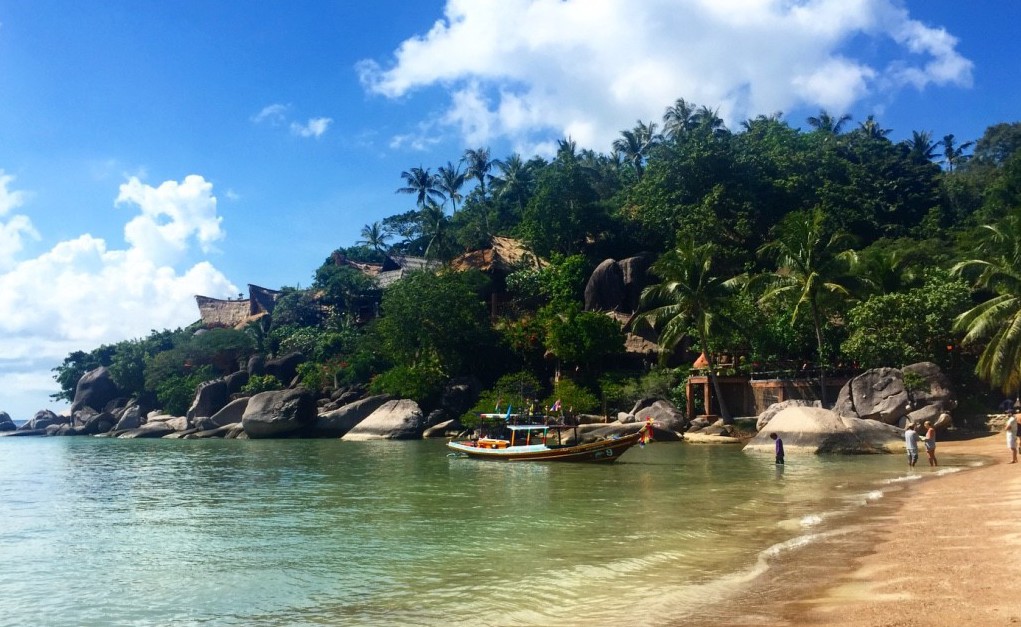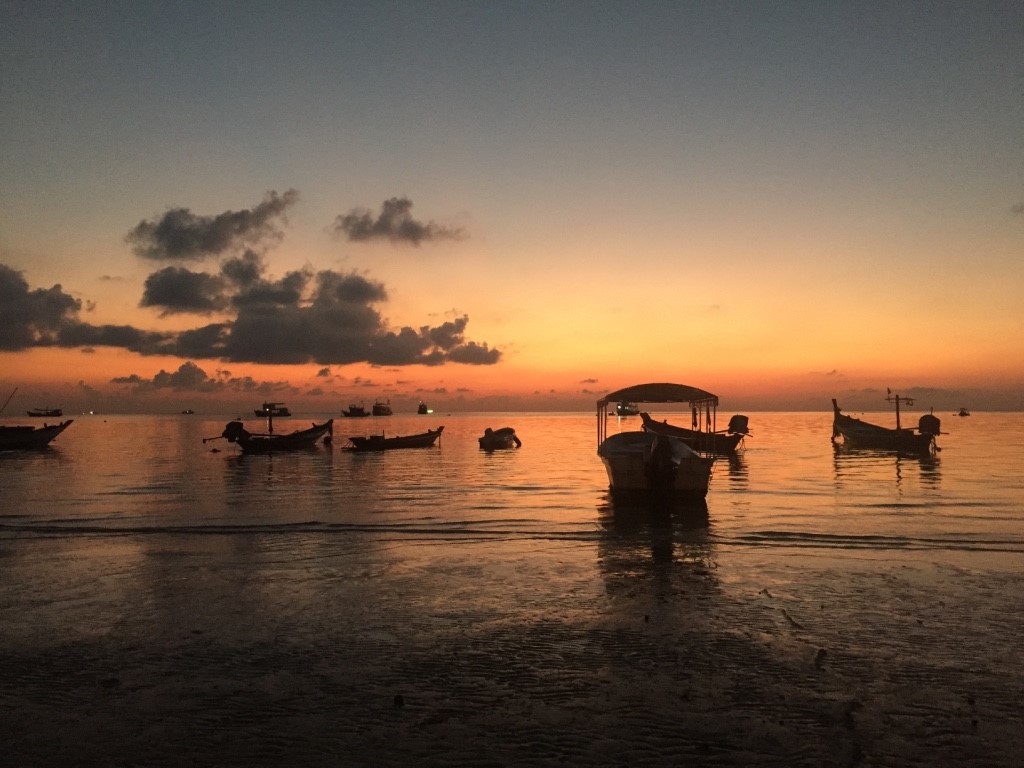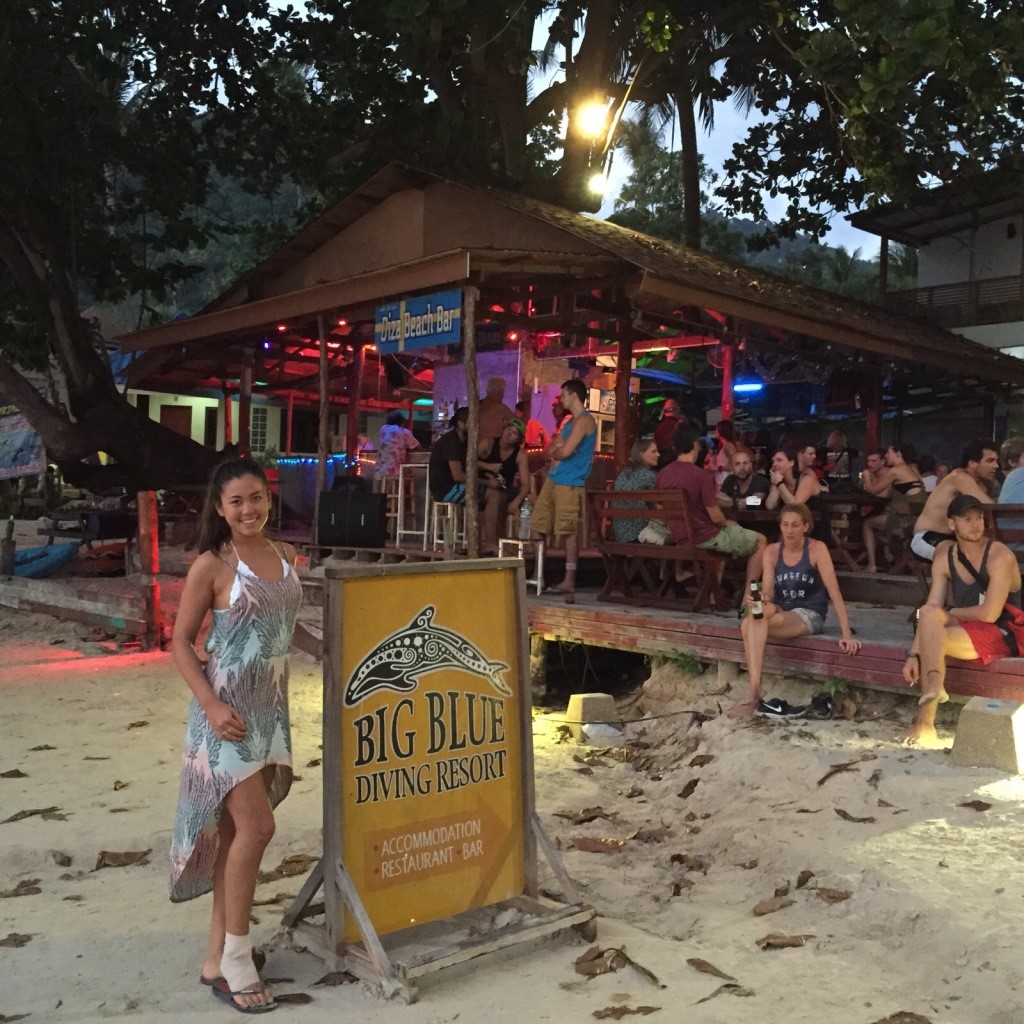News
Diving In Koh Tao

Koh Tao (meaning Turtle Island) is not only my favourite island in Thailand but it is one of the most beautiful islands in the world. Most people in the dive world know or have at least heard about Koh Tao, because of its competitive dive scene (it has the highest number of annual dive certifications a year second to Cairns, Australia) and of course, its beautiful beaches and irresistible laid back vibe. I spent seven months here back in ’08-’09 and I hadn’t been back since, so I was excited to return six years later.
A Little Bit About My Trip
I was lucky enough to spend six weeks away in total – escaping the winter cold in the UK! I spent the first two weeks in Thailand travelling to Bangkok, Koh Phangan, Koh Yao Yai and Koh Tao, where I intended to start my Stress & Rescue Course. However, I sprained my ankle on New Years Eve and unfortunately couldn’t do any of the practical work in the water. Luckily as I had booked a one-way ticket to Thailand I could return 3 weeks later and complete the course.
Choosing A Dive School
Choosing a dive school on Koh Tao can be hard – there are, quite frankly, a lot. Especially on the main beach – Sairee beach – where competition is at its highest. I did some research into several of the larger schools in the area and decided I wanted to dive with Big Blue Diving.
Big Blue Diving’s prime location on the beach, in addition to their new hostel rooms and free accommodation for divers, makes it one of the most popular dive schools on the island.
They are also heavily involved in their marine conservation work – working to ensure that the island remains as undisturbed as possible by the growing tourism in Koh Tao – which was another factor which drew me to them.
My Rescue Course
I have to admit, I was a little nervous about starting my Stress & Rescue Course. It’s one of those courses that I’d heard a lot about, yet at the same time I wasn’t entirely sure what the course involved! However, after meeting my Rescue Team I felt confident to get started. There were three other students taking the course, with a Dive Master Trainee per student as well as the instructor. This was another reason for me choosing to dive with Big Blue – they keep their groups small which is essential for learning.
The Stress & Rescue course was three days in total – I spent one day doing my first aid qualification, followed by two days in the classroom and in the water going through any potential scenarios that could take place on a dive. The course prepares divers on how to recognise, avoid and deal with any problems that occur on the surface or underwater, and in my opinion, is one of the most useful qualifications to have as a diver.
I loved doing my Stress & Rescue Course, and loved being back on Koh Tao. After all these years it still feels like a second home to me. Maybe… just maybe… I will return to the island soon to do my Dive Master Training…
News
Go Diving Show 2025 Main Stage Speaker: Dr. Timmy Gambin

Prof Timmy Gambin is an Associate Professor in Maritime Archaeology at the Department of Classics and Archaeology, University of Malta, and he has been at the forefront of expeditions to undiscovered wrecks and ancient sites for many years – he will be taking you on a trip behind the scenes of some of the latest research on the Main Stage at the GO Diving Show in March.
Prof Gambin graduated in History from this University and went on to attain his Masters in Maritime Archaeology and History from the University of Bristol, where he also got his doctorate in Maritime Archaeology. He has been involved in numerous collaborative research projects, and has also co-directed numerous offshore underwater surveys in various parts of the Mediterranean.
The Virtual Museum
Timmy is the initiator and director of the The Virtual Museum – Underwater Malta. Underwater cultural heritage sites are out of sight and more often than not out of mind. The reason for this situation is simple – the physical barrier created by the sea itself. To date, only divers or people in submarines are able to visit these historic time capsules. There still exist limitations brought about by depth, remoteness and legislation.
In fact, one of the central principles of the UNESCO Convention on the Protection of Underwater Cultural Heritage is that ‘State Parties shall promote public awareness regarding the value and importance of underwater cultural heritage’, a principle that is fully endorsed by The Virtual Museum – Underwater Malta. This online platform brings underwater cultural heritage to the surface and into the homes of the general public.
Using 3D, virtual reality and other media, the aim of this website is to provide access to and share Malta’s unique underwater cultural heritage with all members of the public.
The Phoenician Shipwreck Project
In 2007, during an offshore remote sensing survey aimed at mapping Malta’s Underwater Cultural Heritage, a small anomaly was noted in the sonar data.
Since then, the University of Malta, in collaboration with a number of international partners, have been studying what turned out to be one of the most intriguing recent underwater archaeological discoveries.
Situated at a depth of 110m off Xlendi Bay in Gozo, the Phoenician shipwreck consists of an intact and well-preserved mixed cargo datable to the 7th century BC. The mixed contents of stone and ceramic objects are shedding light on the economic history and trade networks of the Central Mediterranean during the Archaic period.
In addition to the archaeological benefits – including the study of hitherto unknown ceramic typologies as well as a wide variety of scientific tests in the post-excavation phases – this site presents other challenges and opportunities regards methodologies and access, as well as the communication of such a site.
You can find out more on the Phoenician Shipwreck Project here, and the The Virtual Museum here.
Go Diving Show 2025 takes place at the NAEC Stoneleigh Park, Coventry, on the 1st -2nd March.
Marine Life & Conservation
Go Diving Show 2025 UK Stage Speaker: Roisin Maddison

Underwater photogapher and avid UK diver Roisin Maddison will be taking to the UK Stage at the GO Diving Show in March to discuss why she loves diving off our coastline.
Roisin will be talking about her passion for our native species, UK diving and why it isn’t just deep, dark and cold.
Go Diving Show 2025 takes place at the NAEC Stoneleigh Park, Coventry, on the 1st -2nd March.
-

 Gear Reviews1 month ago
Gear Reviews1 month agoGear Review: SurfEars 4
-

 Marine Life & Conservation2 months ago
Marine Life & Conservation2 months agoPaul Watson Released as Denmark Blocks Japan’s Extradition Bid
-

 Blogs3 months ago
Blogs3 months agoExperience Malta and Gozo in 2025: A Paradise for Divers and Culture Lovers
-

 Blogs2 months ago
Blogs2 months agoJeff Goodman Launches Underwater Moviemaker Course with NovoScuba
-

 Blogs3 months ago
Blogs3 months agoThe Benefits of Underwater Photography Workshops
-

 News3 months ago
News3 months agoDive into Adventure: Limited Space Available for January Socorro Liveaboard Trip with Oyster Diving
-

 News3 months ago
News3 months agoScubaverse Acquired by Multiversal Media: A New Era of Expansion into Outdoor Travel and Wildlife Markets
-

 News1 month ago
News1 month ago2-for-1 tickets now available for GO Diving Show

















